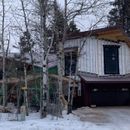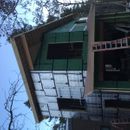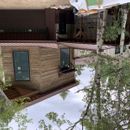Membrain as interior air barrier with exterior polyiso wall insulation
Hi,
I am working on a 600 sq ft addition to our home located in climate zone 6b in MT. I am struggling with how to finish my interior wall system. The wall system is as follows:
1. Wood siding
2. furring strips
3. Grace vycor peel and stick over foam
4. 4 inches polyiso foil faced insulation, joints staggered and taped
5. zip wall system,
2×6 framing
6. 1.5 in open cell spray foam
7. r-15 mineral wool bats
I was originally planning to use certain teed membrain over the mineral wool bats on the interior with t&g as the finished wall. After researching the topic I’m going to install a layer of drywall under the t&g on both the walls and ceiling. I have already purchased the membrain and am wondering if it would be okay to install under the drywall as an additional air barrier. I believe my 4 inches of exterior insulation should be sufficient to keep the walls above the dew point but would like your opinion on the matter. I am a homeowner with some building experience but have never taken on a project of this level before. I want to make sure after all my hard work I’m not doing anything that would compromise my home’s performance.
Any advice would be much appreciated!
Ben
GBA Detail Library
A collection of one thousand construction details organized by climate and house part












Replies
Installing the MemBrain certainly won't hurt anything here. But with the ~R20 cavity insulation and ~R20 (after derating for temp) exterior polyiso there is plenty of dew point margin, so it really isn't doing much additional good here either.
Even at 1.5" open cell foam will do a good job of air sealing the cavities, but be sure to caulk the seams of any doubled-up framing (top plates, jack studs, etc) and between the bottom plate & foundation sill.
With R15 batts it would needs at least 2" of open cell foam to be a compression fit on the fiber, which is what it takes to get the full performance out of them. In my area it would be cheaper to do a full-fill of open cell foam than the 1.5" foam + rock wool solution. YMMV.
If you've got the peel-and-stick plus taped-seam foam, you've got two levels of air sealing already. I'm not sure you need anything more for air sealing--as long as that air barrier connects well to the others at the roof and foundation. If you are also taping the zip wall, that's three air barriers. If you then do the open cell and the membrain, you are up to 5 layers of air sealing. I'm all for belt and suspenders approaches but double-belt and triple suspenders might be more than is needed.
So I'd skip the open-cell and skip the membrain, and do air tight drywall.
Dana really covered everything already, but I want to add one thing since I've done this before myself. You will find it much easier to just detail your drywall as your air barrier than to use MemBrain for this purpose. With drywall, you need only put a bead of sealant around the perimeter and then seal any electrical boxes. You then hang the drywall normally. When you try to detail membrane as an air barrier, you have to deal with it as it flops around during installation, which tends to create gaps in the sealant.
Either way works, but since you don't need the Membrain for vapor control (4" of polyiso is more than enough to keep that wall in good shape), you're just making extra work for yourself installing it.
Bill
> I believe my 4 inches of exterior insulation should be sufficient to keep the walls above the dew point but would like your opinion on the matter.
Say it's 70F and 33% RH inside and 0F outside. The dew point will be 40F and the inside of your foam will be below that at about 35F. So no, it probably won't. But prevent much interior air from reaching the inside surface of the foam and the amount of water accumulation won't be a problem.